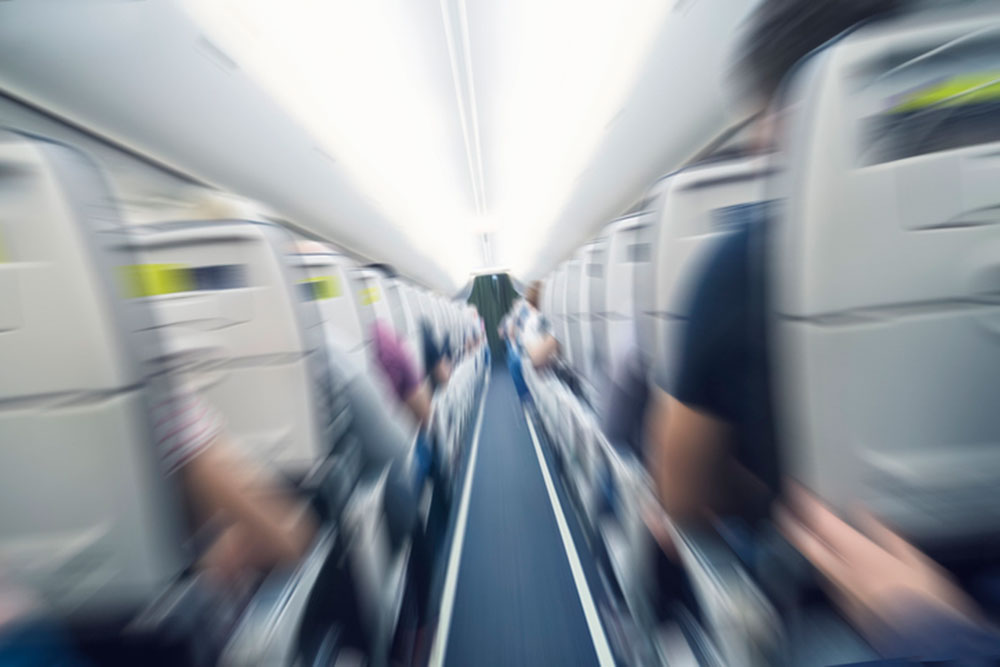
iStock
WOMEN ARE more likely than men to experience motion sickness and also to have poorer visual-spatial skills, a combination that led “human factors” researchers at the University of Warwick to explore brain-training methods for decreasing motion sickness susceptibility as part of the push to develop driverless cars.
Discrepancies between motion sensed by the inner ear and visual stimuli processed by the brain may be the main cause of motion sickness. Faulty brain connections that are more common in women may also explain Mal de Debarquement syndrome (MDD), with sufferers having a sensation of motion inexplicably, when doing nothing, as well as for weeks and sometimes years after leaving a moving vehicle.
Symptoms of both motion sickness and MDD include not just nausea but sometimes debilitating fatigue along with dizziness, confusion and difficulty focusing—and can affect not only travelers but also users of virtual reality devices and the recently ubiquitous Zoom.
“Human factors research is all about how we can design products and services that are pleasurable,” said University of Warwick engineer Joseph Smyth. “Motion sickness has for a long time been a significant limitation to many people’s transport options.”
Motion sickness, also called kinetosis and travel sickness, occurs in susceptible people when motion is felt but not seen, as in a ship without windows or inattention to surroundings when moving on any vehicle; or from motion that is seen but not felt, as with jerky film images from a handheld camera or with video games.
Visuospatial performance is “dynamic,” changing with age and recent experiences, but also with fluctuations in levels of sex hormones. Performance for women is “most drastically reduced when menstruating” and improves with rising testosterone levels during hormone replacement therapy. Improvements that come after practice on video games and driving simulators gave researchers clues for relieving motion sickness.
Of 42 participants in the Warwick study, after assessments of their baseline visuospatial performance, half participated in on-road driving trials while the others used the driving simulation that is more likely to induce motion sickness. Over the next two weeks, for 15 minutes each day, participants practiced pen-and-paper visuospatial exercises: viewing a 3D shape and then correctly identifying which of several reoriented shapes matched the original—called “mental rotation tests”; paper-folding tasks; and analyses of spatial patterns.
By the end, both groups showed improvement in visuospatial performance that was statistically significant—and motion sickness declined by an average of 51% in simulated trials and 58% in on-road trials.
“Imagine if someone is waiting for a test drive in a new autonomous vehicle, they could sit in the showroom and do some ‘brain training puzzles’ on a tablet before going out in the car,” said Joseph Smyth. The exercises could reduce the risk of sickness for these drivers and might also help cruise passengers and users of virtual reality headsets.
Because visuospatial prowess can wax and wane, however, those who benefit from visuospatial exercises would need to do a little training before any activity that risks motion sickness.
Visuospatial exercises available online are generally costly, although the website HAPPYneuron offers free worksheet packets, including one exercise called “Turn Around and Around” that is similar to the mental rotation test—as is one familiar activity: moving a piece of furniture to a new location in the “mind’s eye.” Another is picturing the steps in a task before beginning to do it.
In contrast to those with motion sickness, MDD syndrome patients experience “a phantom perception of self-motion typically described as rocking, bobbing or swaying” that can occur in the absence of any prior movement, even when sleeping or standing still, according to NORD, the National Organization for Rare Disorders.
In these patients, the vestibule-ocular reflex (VOR) in the inner ear fails to maintain balance and stabilize the eyes during head movement, according to neurologist Bernard Cohen at Mt. Sinai School of Medicine, whose team tested a new treatment to readapt the VOR.
In the Mt. Sinai study of 24 participants, researchers moved visual surroundings at the same frequency as the subjects’ rocking or swaying movements, about one cycle per five seconds—with about three to five treatments a day for one week. Improvement lasted for an average of one year in 70% of subjects, while six had only transient improvement and one did not improve at all.
Vestibular rehabilitation—using exercises like those commonly prescribed to improve balance—as well as the newer brain stimulation methods can also help. And, although symptoms can worsen after traveling by train or car, and most often after a long boat trip, doing any of these can also provide short-term relief.
Boston retailer S.H., who has been diagnosed with MDD, experiences other anomalies that she thinks are related: a facility with writing backwards and reading upside down; and a consistent inability to give correct directions involving left and right turns, for which she always reverses the two.
Activities that can cause unpleasant reactions include sleeping on a waterbed and skiing, as well as Zoom meetings. But finding a solution may be the most urgent for Zoom sufferers during the ongoing pandemic when Zoom meetings seem to occur more frequently than in-person ones ever did.
—Mary Carpenter
Mary Carpenter regularly reports on topical issues in health and medicine.

So interesting, thanks! I have been calling myself ‘directionally challenged’ for years (also have motion sickness), and I so relate to the difficulty of recognizing upside-down shapes. I even have a little trouble putting tools or things like Airpods back in their correct slot! Time to try some of those visuiospacial exercises!